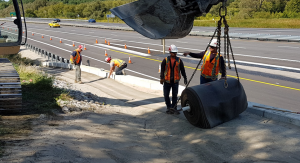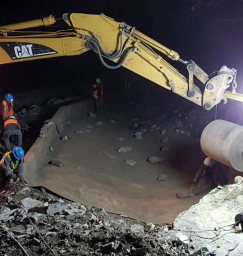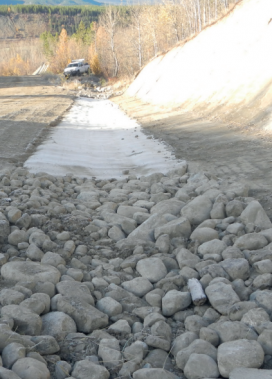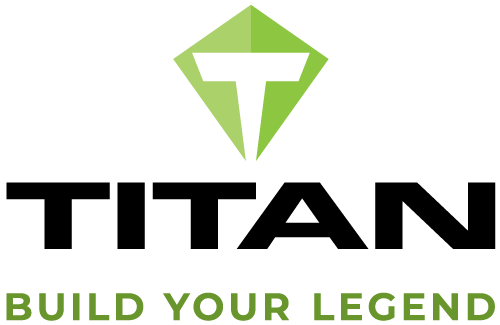Rolling Out Concrete Innovations

Rolling Out Concrete Innovations
A look at Concrete Canvas® case studies
Infrastructure construction crews aim to work quickly, efficiently, and with the fewest roadblocks possible. Getting a job done faster means being able to move on to the next one quicker and, in turn, tackle more jobs in a season. Site conditions and logistics can certainly come into play, but having the right materials lays a solid foundation.
Fortunately, the civil infrastructure industry is rife with innovations that can optimize projects and their outcomes. One notable example is Concrete Canvas® (CC), a flexible Geosynthetic Cementitious Composite Mat (GCCM) that is quickly becoming a go-to alternative to conventional concrete, shotcrete, and even rip rap for road building, mining, oil & gas, agriculture, and civil construction jobs.
“Essentially, this is a geosynthetic mat that you can roll out over the site, add water, and then wait as it forms a thin, waterproof, and low-carbon concrete layer,” explains Ron Drewry, Product Specialist with Titan Environmental Containment, Canada’s exclusive supplier of Concrete Canvas®. “What’s drawing more and more contractors to this material is the fact it can be installed quickly and without a highly-skilled crew, making it especially useful in remote or difficult areas.”

The utility of Concrete Canvas® (CC) has been demonstrated on projects in Ontario and across the country. At BC’s Rogers Pass Glacier National Park, for example, 375 sq. ft. of CC was applied to control erosion on four ditches that were subject to heavy snow and water throughout the seasons.
“The ability to handle the freeze-thaw is another benefit of Concrete Canvas® (CC)” adds Drewry. “Because it has a fiber matrix instead of rebar, the material doesn’t crack and has good flexural strength.”
Another example of CC in action was at Eagle Gold Mine in Northern Yukon, where Concrete Canvas® was rolled out across two main spillways to prevent erosion, as demonstrated in the video below.
Concrete Canvas® has also built a reputation among road builders. In 2017, for example, Aecon Construction applied 125 sq. m of CC to seal behind a retained soil system wall located by an off ramp on Highway 401 after a previously constructed rip rap and geotextile intercept ditch had failed to stop water penetration. In Kingston, Pomerleau saved considerable time and resources using CC as its outfall lining on a 401 Highway project.

Speaking to the latter project, Drewry notes, “If Concrete Canvas® wasn’t used, then a whole pile of other work would have to be done like shutting down the railroad, which would have caused massive delays and millions of dollars. Being able to work around that and install the material quickly at night was a huge plus.”
Ease of application is another advantage, he adds, noting, “People think this is high-tech and complex to install, but it really isn’t. It doesn’t take much training for crews to learn how to roll the material out and install it correctly themselves.”
“I mean, if I can do it, anyone can,” he jokes.
Innovation is an asset to any infrastructure project. And as these and other case studies have shown, Concrete Canvas® is one such innovation. Not only is this product a superior solution for site challenges, but it also offers major advantages for project contractors in the field.
Titan Environmental Containment is a North American leader in the supply, installation, and fabrication of high-quality geosynthetics and specialty civil engineering construction products that help manage the environment and prolong the life of critical infrastructure.

